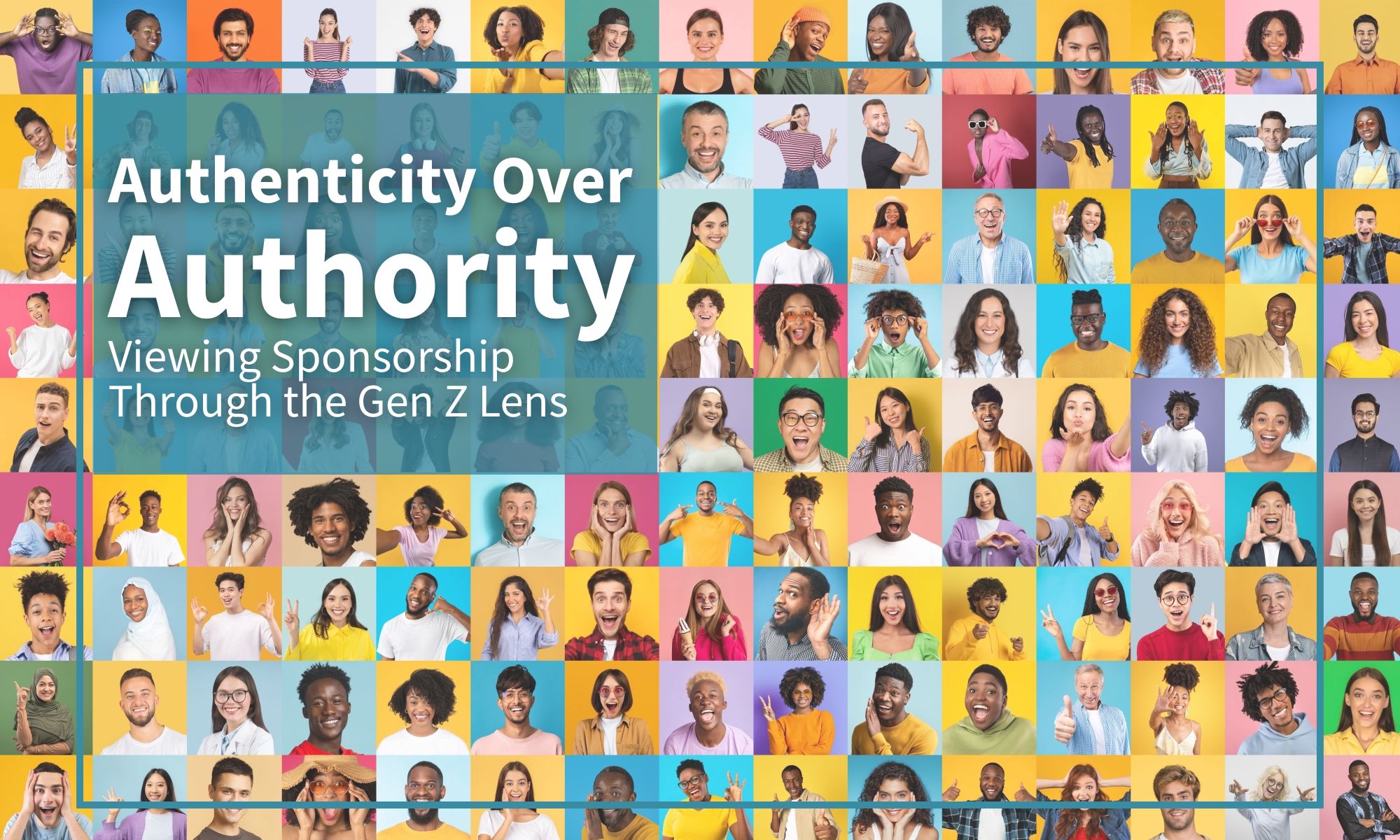Authenticity Over Authority: Rethinking Sponsorship Through The Gen Z Lens
 By Carolyn Shomali, PAR
By Carolyn Shomali, PAR
While long-time members may be familiar with how sponsorships support your association’s mission, the newest generation of professionals often needs convincing. Younger audiences, especially Gen Z, are looking for something more than logo placements and promotional scripts. They’re looking for authenticity - and studies show they'll overwhelmingly leave a brand they perceive as inauthentic. That expectation affects not only sponsors but the associations they partner with.
Alexis Redmond, JD, MA, CAE of the National Student Speech Language Hearing Association (NSSLHA) says a sponsor’s brand directly impacts the association’s brand. If a member doesn’t trust the sponsor, it erodes trust in the association, no matter how long it has been in existence.
“Trust is a currency in a younger audience. In this population, authenticity is going to be greater than authority,” she says. “When you're creating relationships with sponsors, you have to ask: How are they supporting a component of your mission, vision, or core values?”
NSSLHA serves undergraduate and graduate students across 362 chapters nationwide and has been around since 1972. But Redmond says Gen Z continually pushes them to show value, not rely on legacy.
“It’s easy for us as a 53-year-old organization to fall back on, ‘We’re an institution.’ Gen Z is bucking that. They say, ‘I don’t care. Prove it.’”
This lesson is universal, regardless of your membership profile. Gen Z is naming what all audiences increasingly feel: sponsorships must be intentional and value-driven. Redmond calls the alternative the “sponsorship ick,” the feeling members get from inauthentic outreach. But how can associations avoid it? Redmond offers these tips.
Strengthen Internal Alignment First
Solid sponsorship strategy starts with internal synergy. The teams responsible for creating programming must work closely with the teams who sell sponsorships. Redmond says her team meets every other month to vet potential partners for mission alignment. Once opportunities are developed, they run everything through a member-centric lens to ensure it feels authentic, purposeful, transparent – and void of the “ick.”
This vetting continues through the sales cycle. “Is this company able to meet the values our members expect?” Redmond says. If the answer is no despite best efforts, they pass and leave money on the table.
Associations also need to prepare sponsors for the nuances of next-gen audiences. Young professionals can immediately sense when something “feels like an ad.” Equipping sponsors with audience insights, expectations, and communication norms helps to build trust on all sides.
Make Sponsorship Moments Feel Natural, Not Interruptive
To avoid the “commercial break” effect that turns members off, Redmond encourages associations to rethink how sponsor moments are delivered.
“Think about ways you can make it more engaging and interactive,” she says. “If you don’t, the costs are big like loss of engagement, loss of ROI, and damage to your credibility.”
For example, at their award ceremony, instead of starting with sponsor remarks, NSSLHA begins with what the award winners achieved. Then, they bring the sponsor in to connect their own values to that story like explaining how their mentoring program aligns with the student accomplishments being recognized. This creates a shared mission moment, not a sales pitch.
“It takes extra steps,” Redmond says. “But it creates a more robust, less awkward experience. No hidden agendas. And if it feels like a real value add, members are happy to engage.”
Even small tweaks make a difference. One sponsor at a reception held the drink tickets as a natural point of interaction. Members engaged willingly because it felt intentional and fun, not forced.
Encourage Sponsors to Address the Biggest Needs of Your Community
One of the strongest pathways to authenticity is helping sponsors build true social proof with your audience. Mission-based sponsorships are a powerful way to align your association’s values with those of your partners. For example, NSSLHA partnered with a sponsor to fund a travel award for students who otherwise couldn’t afford to attend the annual conference. Award recipients shared their experiences through photos and social posts, giving the sponsor meaningful visibility and brand equity with the broader community.
It’s a model for how associations can build authenticity by identifying a high-stakes member need and inviting sponsors to help meet it. Redmond says this approach often requires pushing sponsors to engage honestly with the issues members care about most, even the ones companies are typically hesitant to address.
“One thing we push our sponsors to do is ask them directly: What’s the one topic you don’t want to talk about—and why?” Redmond says.
Every profession has its pressure points: low pay, student debt, limited job opportunities, mental health strain. Rather than avoid these topics, NSSLHA encourages sponsors to speak to them candidly.
“And nine times out of ten, they say yes, we can talk about that,” Redmond notes. “We’ve talked about mental health. We’ve talked about negotiating salary.”
This kind of transparency strengthens trust and increases member value. NSSLHA also incorporates this value-forward strategy into unique engagement opportunities—like 90-minute Q&A sessions where sponsors are embedded directly into panel discussions. These conversations later live on YouTube, extending exposure and creating FOMO among prospective partners. Similarly, Instagram Live sessions begin with a scripted Q&A but quickly shift to member-driven questions, giving sponsors the chance to respond in real time to what matters most.
“When it comes to engaging with our members, we always come from a digital-first mindset, because our members are digital natives.”
Whether your association’s members are just out of college or emerging from postgraduate studies, the newest generation of members remind associations that sponsorship authenticity matters. While sponsorships benefit associations financially, it’s the authentic relationships and sponsor’s expertise that strengthen engagement and build trust for the future.